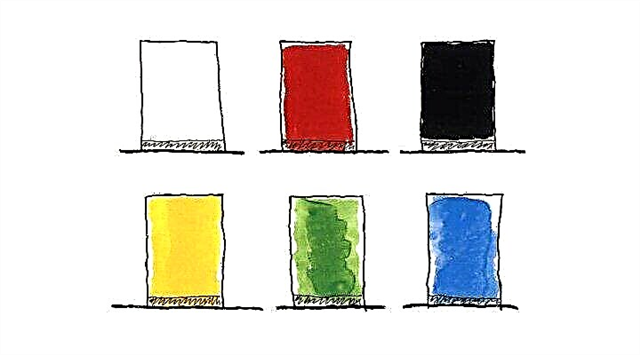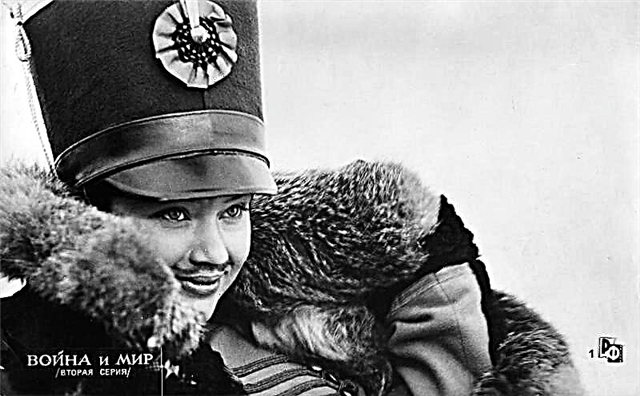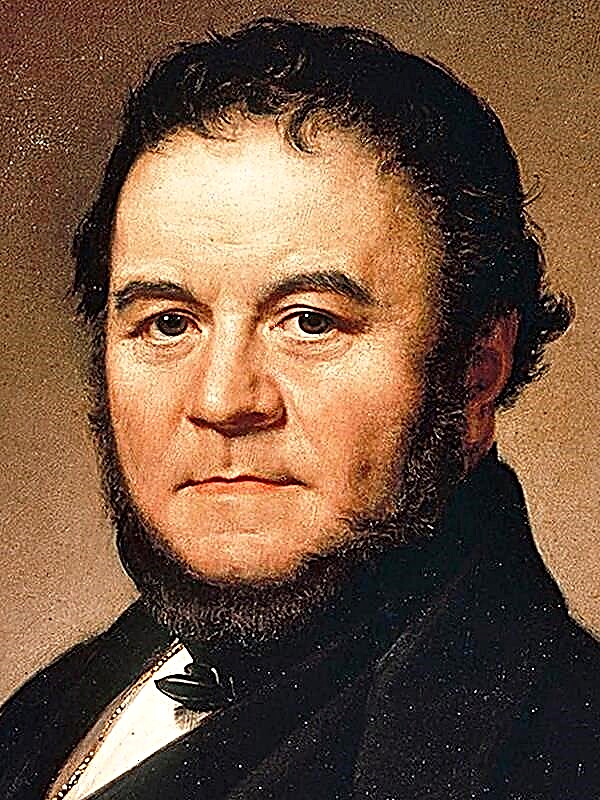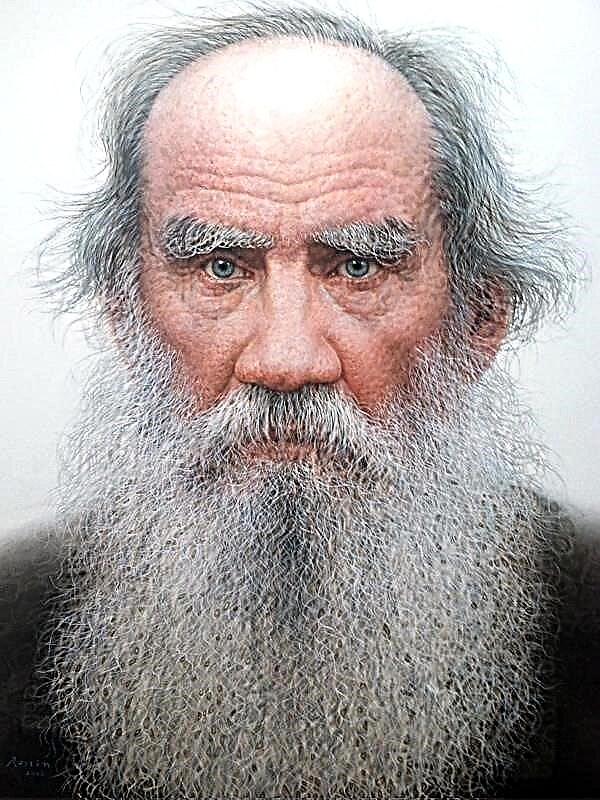In the preface, the author writes that he set himself great goals in this small essay. He tried to describe in it soil and vegetation, not like European ones. Writers too long sat their lovers on the banks of streams under the canopy of beech trees, and he decided to give them a place on the coast of the sea, at the foot of the rocks, in the shade of coconut trees. The author wanted to combine the beauty of tropical nature with the moral beauty of a certain small society. He set himself the task of making obvious several great truths, including the fact that happiness consists in living in harmony with nature and virtue. The people about whom he writes existed in reality, and in their main events their history is true.
On the eastern slope of the mountain, rising beyond the Port of Louis, on the Island of France (now the island of Mauritius), the ruins of two huts are visible. Once, sitting on a hill at their foot, the narrator met an old man who told him the story of two families who lived in these places two decades ago.
In 1726, a young man from Normandy named de Latour came to this island with his young wife to seek happiness. His wife was an old family, but her family opposed her marriage to a man who was not a nobleman and deprived her of a dowry. Leaving his wife at the Port of Louis, he sailed to Madagascar to buy a few blacks and return, but fell ill during the trip and died. His wife remained a widow, having absolutely nothing but one black woman, and decided to cultivate a piece of land together with the slave and thereby earn her livelihood. For about a year now, a cheerful and kind woman named Margarita has been living in this area. Margarita was born in Brittany into a simple peasant family and lived happily until she was seduced by a noble neighbor. When she suffered, he abandoned her, refusing to even provide for the child. Margarita decided to leave her homeland and hide her sin away from her homeland. Old Negro Domingo helped her cultivate the land. Madame de Latour was delighted to meet with Margarita, and soon the women became friends. They divided the area of the hollow, numbering about twenty acres, among themselves, and built two houses nearby to constantly see each other, talk and help each other. The old man, who lived beyond the mountain, considered himself their neighbor and was the godfather of the first son of Margarita, who was named Paul, and then the daughter of Madame de Latour, who was named Virginia. Domingo married the black woman Madame de Latour Maria, and everyone lived in peace and harmony. Ladies spun yarn from morning till night, and this work was enough for them to support themselves and their families. They were content with the essentials, rarely went to the city and wore shoes only on Sundays, heading early in the morning to the Pampelmuss church.
Paul and Virginia grew up together and were inseparable. The children could neither read nor write, and their whole science consisted of mutual pleasing and help. Madame de Latour was worried about her daughter: what would happen to Virginia when she grows up, because she has no condition. Madame de Latour wrote to a rich aunt in France and wrote again and again at every opportunity, trying to arouse her good feelings for Virginia, but after a long silence the old prude finally sent a letter stating that her niece deserved her sad fate. Not wanting to be considered too cruel, the aunt still asked the governor, Mr. de Labourdonnay, to take her niece under her protection, but so recommended her that she only set the governor against the poor woman. Margarita consoled Madame de Latour: “Why do we need your relatives! Has the Lord left us? He is our father alone. ”
Virginia was kind, like an angel. Once, having fed a runaway slave, she went with her to her master and begged her forgiveness. Returning from the Black River, where the owner of the fugitive lived, Paul and Virginia got lost and decided to spend the night in the forest. They began to read the prayer; as soon as they finished it, there was a dog barking. It turned out that it was their dog Fidel, after which the Negro Domingo appeared. Seeing the alarm of the two mothers, he let Fidel smell the old dress of Paul and Virginia, and the faithful dog immediately rushed into the footsteps of the children.
Paul turned the hollow where both families lived into a blooming garden, skillfully planting trees and flowers in it. Each corner of this garden had its own name: the cliff of the Found Friendship, the lawn of the Heart Consent. A place at the source under the canopy of two coconut trees planted by happy mothers in honor of the birth of children was called Virginia Rest. From time to time, Madame de Latour read aloud some touching story from the Old or New Testament. The members of a small society did not philosophize over the holy books, for all their theology, like the theology of nature, was in feeling, and all morality, like the moral of the Gospel, was in action. Both women avoided communication with both rich settlers and poor, for some are looking for saints, while others are often angry and envious. At the same time, they showed so much courtesy and courtesy, especially in relation to the poor, that gradually gained the respect of the rich and the trust of the poor. Each day was a holiday for two small families, but the most joyful holidays for Paul and Virginia were the birthday of their mothers. Virginia baked wheat flour cakes and treated them to the poor, and the next day arranged a feast for them. Paul and Virginia had no hours, no calendars, no annals, no historical, no philosophical books. They determined the hours by the shade cast by the trees, they recognized the seasons by whether the gardens were blooming or bearing fruit, and years were calculated by harvests.
But for some time now Virginia began to torment an unknown ailment. Either gratuitous gaiety, or gratuitous sadness took possession of her. In the presence of Paul, she was embarrassed, blushed and did not dare to look up at him. Margarita increasingly spoke with Madame de Latour about marrying Paul and Virginia, but Madame de Latour believed that the children were too young and too poor. After consulting with the Old Man, the ladies decided to send Paul to India. They wanted him to sell what was abundant in the area: raw cotton, ebony, gum - and bought several slaves, and upon returning he married Virginia, but Paul refused to leave his family and friends for the sake of enrichment. Meanwhile, a ship arriving from France brought Madame de Latour a letter from her aunt. She finally relented and called her niece to France, and if her health did not allow her to take such a long journey, she ordered her to send Virginia to her, promising to give the girl a good upbringing. Madame de Latour could not and did not want to embark on a journey. The governor began to persuade her to let Virginia go. Virginia did not want to go, but her mother, and after her the spiritual father, began to convince her that this was the will of God, and the girl reluctantly agreed. Paul watched with chagrin as Virginia prepares for her departure. Margarita, seeing the sadness of her son, told him that he was just the son of a poor peasant woman and, in addition, illegitimate, therefore, he was not a couple of Virginia, who on the mother’s side belonged to a rich and noble family. Paul decided that Virginia had recently shunned him out of contempt. But when he spoke with Virginia about the difference in their origin, the girl vowed that she was not going of her own free will and would never love and would not call the brother another boy. Paul wanted to accompany Virginia on a journey, but both mothers and Virginia herself persuaded him to stay. Virginia vowed to return in order to combine her fate with his fate. When Virginia left, Paul asked the Old Man to teach him literacy so that he could correspond with Virginia. There was no news from Virginia for a long time, and Madame de Latour only knew by her side that her daughter had arrived safely in France. Finally, after a year and a half, the first letter came from Virginia. The girl wrote that she had sent several letters before, but did not receive an answer, and realized that they had been intercepted: now she took precautions and hopes that this letter will reach its destination. A relative sent her to a boarding house at a large monastery near Paris, where she was taught various sciences, and forbade all relations with the outside world. Virginia really missed her loved ones. France seemed to her a country of savages, and the girl felt lonely. Paul was very sad and often sat under the papaya that Virginia had once planted. He dreamed of going to France, serving the king, making a fortune and becoming a noble nobleman in order to earn the honor of becoming the husband of Virginia. But the Old Man explained to him that his plans were not feasible and that his illegal origin would block his access to higher posts. The old man supported Paul's faith in the virtue of Virginia and the hope of her soon return. Finally, on the morning of the twenty-fourth of December 1744, a white flag was hoisted on the mountain of Discovery, which meant that a ship appeared at sea. The pilot, having sailed from the harbor to identify the ship, returned only in the evening and announced that the ship would drop anchor in the Port of Louis the next afternoon, if there was a fair wind. The pilot brought letters, among which was a letter from Virginia. She wrote that her grandmother first wanted to forcibly marry her, then deprived her of her inheritance and finally sent her home, moreover, at a time of year when travels are especially dangerous. Upon learning that Virginia was on the ship, everyone hurried into the city. But the weather turned bad, a hurricane hit, and the ship began to sink. Paul wanted to throw himself into the sea to help Virginia either die, but he was kept by force. Sailors jumped into the water. Virginia went on deck and extended her arms to her lover. The last sailor who remained on the ship rushed to the feet of Virginia and begged her to take off her clothes, but she turned away from him with dignity. She held the dress with one hand, pressed it to her heart with the other and raised her clear eyes. She seemed like an angel flying away to heaven. A water shaft covered her. When the waves carried her body ashore, it turned out that she was clutching a picture in her hand - a gift from Paul, with whom she promised never to leave. Virginia was buried near the Pampelmus Church. Paul could not be comforted and died two months after Virginia. A week later, Margarita followed. The old man moved Madame de Latour to himself, but she survived Paul and Margarita only for a month. Before her death, she forgave the heartless relative, who doomed Virginia to death. The old woman suffered severe retribution. She was tormented by remorse and suffered from hypochondria attacks for several years. Before her death, she tried to deprive her relatives of the family she hated, but they put her in jail as if she were crazy and put custody on her property. She died, preserving, to top all troubles, enough reason to realize that she was robbed and despised by the very people whose opinion she had valued all her life.
The cape, which the ship could not go around on the eve of the hurricane, was called the Cape of Misfortune, and the bay where Virginia's body was thrown was called the Tomb Bay. Fields were buried near Virginia at the foot of bamboos, next to them are the graves of their gentle mothers and faithful servants. The old man was left alone and became like a friend who has no more friends, a father who has lost his children, a traveler wandering alone on the earth.
Having finished his story, the Old Man withdrew, shedding tears, and his interlocutor, listening to him, dropped more than one tear.


 Communication skill
Communication skill








